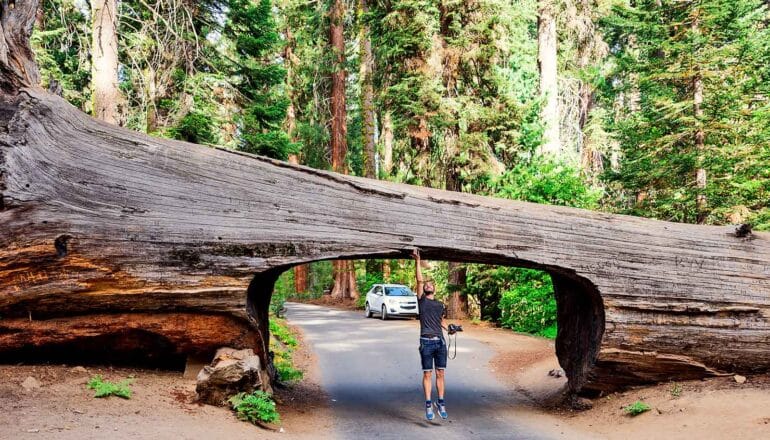
The planet’s biomass—the material that makes up all living organisms—is concentrated in organisms at either end of the size spectrum, research finds.
Researchers spent five years compiling and analyzing data about the size and biomass of every type of living organism on the planet—from tiny one-celled organisms like soil archaea and bacteria to large organisms like blue whales and sequoia trees.
They found that the pattern favoring large and small organisms holds across all types of species and is more pronounced in land-based organisms than in marine environments. Interestingly, maximum body size seems to reach the same upper limits across multiple species and environments.
“Trees, grasses, underground fungi, mangroves, corals, fish, and marine mammals all have similar maximum body sizes. This might suggest that there is a universal upper size limit due to ecological, evolutionary, or biophysical limitations,” says lead author Eden Tekwa, a research associate in McGill University’s department of biology.
“Life constantly amazes us, including the incredible range of sizes that it comes in,” says coauthor Malin Pinsky, an associate professor in the department of ecology, evolution, and natural resources at Rutgers University. “If the tiniest microbe was the size of the period at the end of this sentence, the largest living organism, a sequoia tree, would be the size of the Panama Canal.”
“As for humans, we already know we comprise a relatively small biomass, but our size among all living things reveals our place in the global biome. We belong to the size range that comprises the highest biomass, which is a relatively large body size,” says Tekwa.
Cataloguing which body sizes are most common is a key step towards understanding the world around us, say the authors. These results also have important implications for predicting the impacts of climate change and human activity on the planet’s biomass.
“For example, fish biomass is probably half of what it was before humans arrived, but it gets harder and harder to infer those patterns as we go farther back in time,” says Tekwa. “We need to think about how the distribution of body size biomass will change under environmental pressures.”
The study appears in PLOS ONE.
Source: McGill University
The post Tiniest and largest creatures hold a lot of biomass appeared first on Futurity.
from Futurity https://ift.tt/c1AWdSi
No comments:
Post a Comment